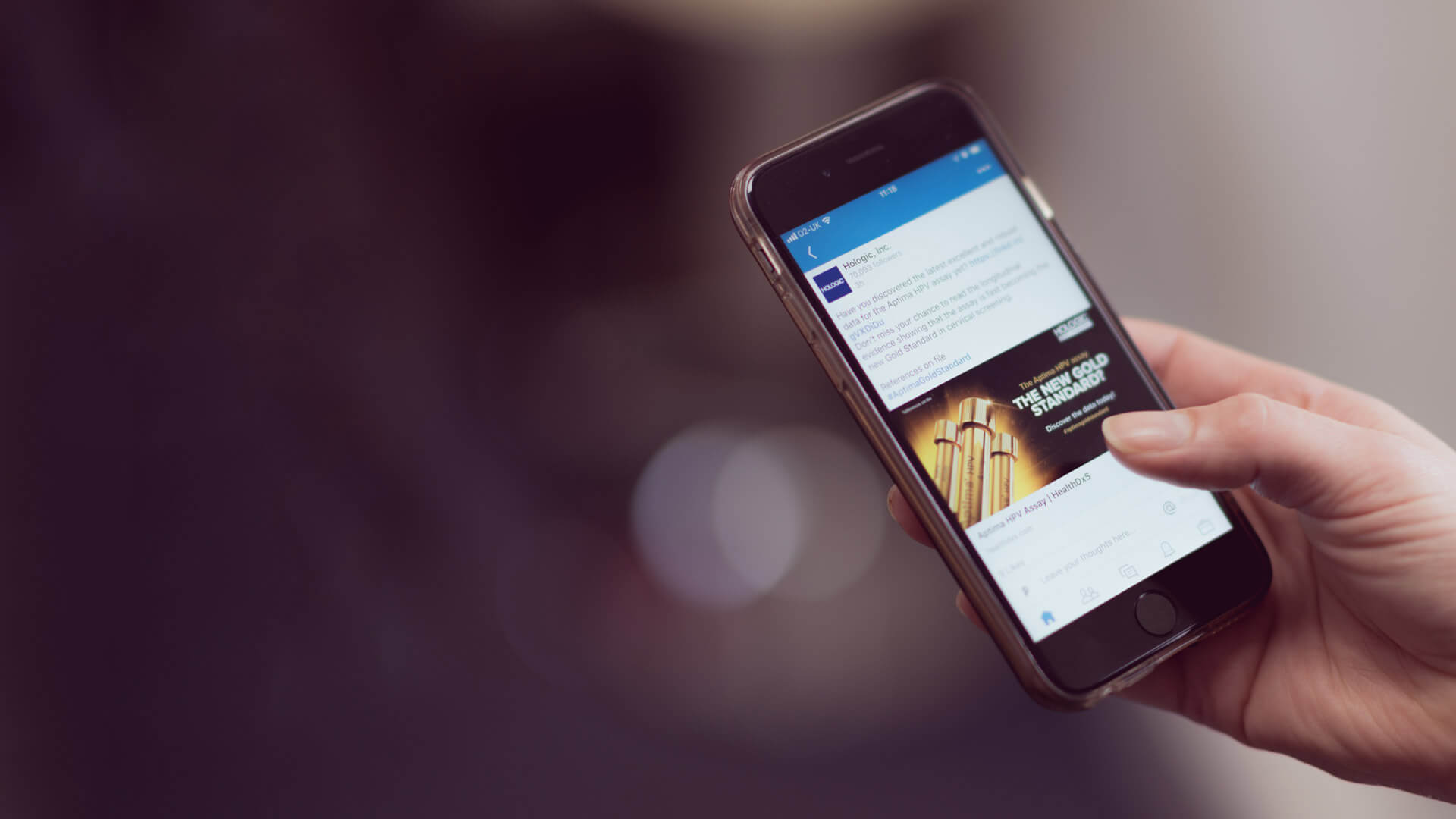
Wondering why your social media posts aren’t gaining as much traction as you’d hoped for? Want to know why only 100 people out of your 10,000 followers have seen your post?
With the ever-evolving world of social media, comes the constantly updated world of social media algorithms.
Before switching to algorithms, most social media feeds and platforms showed posts in reverse chronological order. You would see the most recently posted content first and could scroll to get to the older content. This is still an option on Twitter, and more recently, after lots of campaigning from users for it, Instagram have brought this feature back. (Click the Instagram logo on your main feed page and select Following to access the chronological feed!)
Now most social media feeds show the ‘most relevant’ information first. This is similar to the way that Search Engines show users search results. For example, Google will tailor search results to each user based on the sites and interests they have engaged with previously.
So what are social media algorithms?
An algorithm is a formula or set of steps for solving a particular problem.
In the world of social media, the ‘particular problem’ can be the oversaturation of users all battling to get in front of the same audience. With so many users on these platforms, there’s a need to create order and relevancy – which is where algorithms come in.
How does a social media algorithm work?
An algorithm is a combination of metrics. In the case of social media algorithms, these are predominantly tailored to suit the user experience; serving content that the algorithm deems the most relevant to that user. These platforms are generally quite vague in publishing the specifics of their algorithm, but there are ways to figure out what works for you.
For example, Facebook or Twitter are likely to put posts from your family and friends front and centre, because those are the accounts you interact with the most often. Instagram tells us that what shows up in your feed is determined by which posts and accounts you engage with the most, whether that’s through accessing profiles, searching hashtags, liking or commenting.
What do algorithms measure in a social post?
Each time you publish a post, the algorithm will look at a number of things. These are ever-changing across all platforms, but generally follows the rules below.
The Facebook algorithm is based on four main ranking signals: popularity, content type, relationship and recency. Facebook prioritises family and friends, as well as tracking time spent viewing a post.
This is a platform dedicated to networking primarily, and so the algorithm is based on connection and engagement. Relevant content is important here and getting comments will help to get your content seen.
Key factors looked at within Instagram’s algorithm include relationship with user, interests, frequency, recency and usage. The more you engage with a specific type of content, or interest, the more you will see within your feed and your explore page.
Whilst it has a reverse chronological feed that simply shows tweets in date/time order, it does have an algorithm based feed that shows tweets it thinks are relevant to the user. Twitter checks for engagement, activity, recency and the media type used here. Posting consistently and engaging with others helps your tweets to get seen.
TikTok
TikTok is a video platform, and it’s algorithm is one that doesn’t focus on how many followers you have. Important signals are user interaction, video details such as captions and hashtags, and your device and account settings such as country and language. You don’t have to be a big account to get seen here.
Pinterest has a different feed layout and follower strategy compared to other social media platforms, however it still works on an algorithm. Factors here include relevance of topic, quality of a pin, website domain quality and quality of the pinner. The search method works on past content interactions, so you see more of what you have previously searched each time you log in.
How do you optimise your content for algorithms?
Each social platform has its own ways of working and there are varying degrees of insight into each algorithm available. It means there’s a great deal of trial and error involved in getting and maintaining the best reach and engagement on each of your social accounts, however there are things you can do to help.
Social media algorithms use engagement to gauge how sharable your content is. Likes, comments and shares tell the algorithm that users are enjoying a post, and the more engagement it gets, the more likely it is to be pushed out to more people.
So with that, ask questions to encourage comments and post content that is shareable. You want your users to want to engage, comment and share your content. Discover what your audience needs or wants and create content in line with that.
Start creating more video content. As video becomes more and more popular, social media platforms seem to be prioritising this content in their algorithms. Instagram reels for example can gain huge traction in terms of reach and engagement if you create videos using the current trending audio and make it relevant to your brand.
Make your content searchable by using hashtags on each post. This is most relevant on Instagram, LinkedIn and Twitter. Do research on relevant keywords within your niche. Similarly, by tagging relevant accounts in your posts you can provide them with that little bit of extra reach. Relevant accounts are more likely to engage with and reshare your content following being tagged.
Provide content that is of value to your target audience. Quality of engagement is more important than quantity of views, when it comes to sharing content online. Create authenticity with content that is relevant to your company and your values.
Optimise your post timing. This can be a case of trial and error but posting when your audience is most likely to be active means your posts are more likely to be seen. Most platform analytic tools will give you an idea of when your users’ most active time periods are.
Of course, algorithms and social media platforms are ever changing…
Don’t be disheartened if you do not forge the immediate results you desire. Keep your business purpose in mind at all times and set long-term goals to work towards.
If your organic social media posts are not performing well, allocate a set amount of your marketing budget to paid social media adverts to reach new, relevant audiences. This tactic can work particularly well if you’re looking for further reach on specific campaign led activities.
Share this
Find out more about the services we offer
and let’s work together to grow your business
Strategy
Creating market engagement.
Explore how our range of Strategic Solutions create stronger connections and actively engage your audiences.
Identity
Visually reinforcing your brand.
Discover how our Creative and Branding services enhance your Identity through compelling and arresting content.
Technology
Creative solutions & innovation.
Let us show you how we deliver intelligence led digital solutions that bring your brand to life whilst improving visibility.
